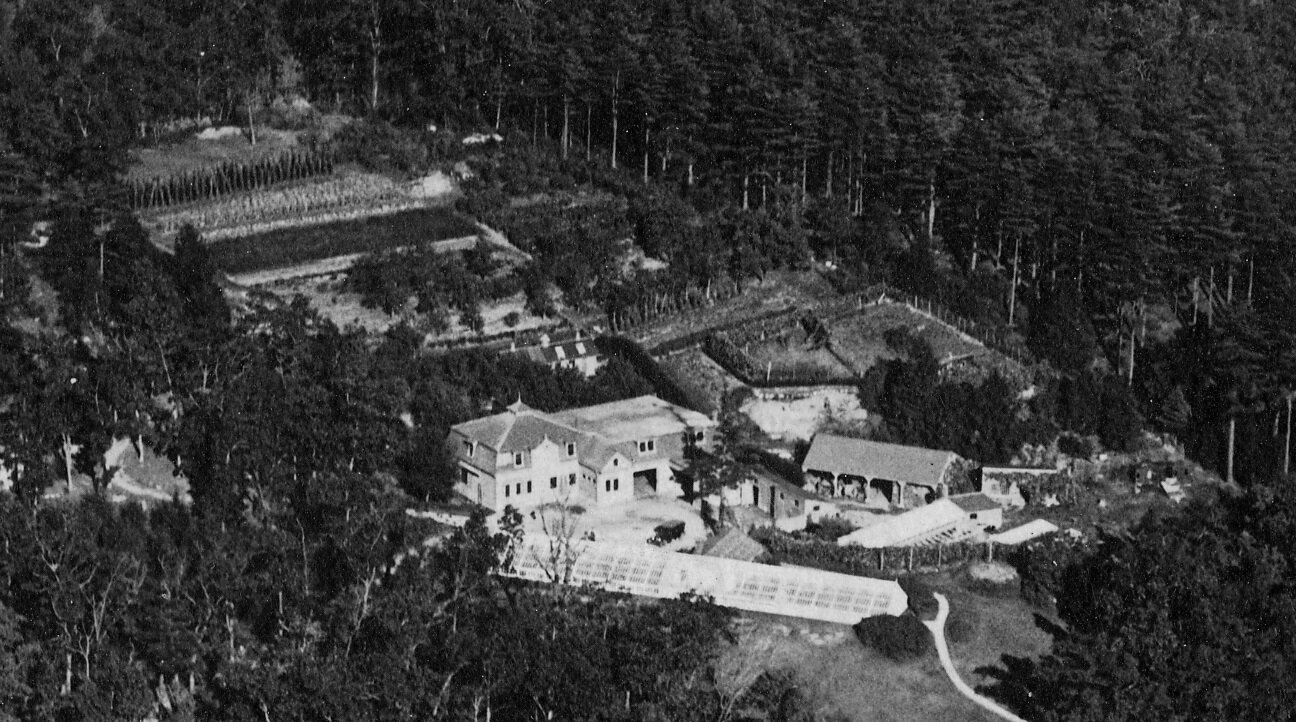The Hidden Farm
The main parking lot is on the site of the greenhouse and carriage barn, shown in this photo from 1928.
Uncovering The Hidden Farm…
Under a thick layer of invasive plants lie remnants of the Paines’ farm, a key element of their country estate composed of pleasure grounds, farm and forest. As we gradually remove the invasive garlic mustard, black swallowwort, and buckthorn from the hill north of the main parking lot, we’ve found remarkable survivors from the 19th and early 20th centuries.
Walnut and apple trees, peonies, phlox, rhubarb, grape vines, spigots and ruins of the carriage barn and windmill evoke the gentleman’s farm that once supplied food for the extended family and people in need.
Over the past several years, volunteers and staff have been hand picking garlic mustard in April and May. We mowing twice over the summer to prevent the black swallowwort from going to seed.
The purpose at this point is purely to control the invasives, contain and shrink the infected area and maintain healthy woodlands. With your input, we will be considering the future of this land in our work with the Conservation Commission on a Conservation Land Stewardship Plan in the next year or so.
Want to help?
Weeding garlic mustard is easy! Grab the plant at its base to get pull the entire plant, root and all, ideally after a rain. Bag the plant and put it in the dumpster by the house.
These biennial plants grow from both root and seed. Every plant pulled and bagged prevents the spread of thousands of seeds. Thank you!







![IMG_1624[1].JPG](https://images.squarespace-cdn.com/content/v1/56cdc5ba2fe13126751fa252/1590007586892-BBHZRL1RPIP0DMNOT7RN/IMG_1624%5B1%5D.JPG)

